Hyundai Tucson vs Kia Ceed Sportswagon – Which model is better for everyday use?
Compare performance, boot capacity, efficiency and price at a glance.
Find out which car is the better choice for you – Hyundai Tucson or Kia Ceed Sportswagon?
Costs and Efficiency:
Price and efficiency are key factors when choosing a car – and this is often where the real differences emerge.
Kia Ceed Sportswagon has a noticeable advantage in terms of price – it starts at 24300 £, while the Hyundai Tucson costs 30600 £. That’s a price difference of around 6300 £.
Fuel consumption also shows a difference: Hyundai Tucson manages with 1 L and is therefore decisively more efficient than the Kia Ceed Sportswagon with 6 L. The difference is about 5 L per 100 km.
Engine and Performance:
Under the bonnet, it becomes clear which model is tuned for sportiness and which one takes the lead when you hit the accelerator.
When it comes to engine power, the Hyundai Tucson has a clearly edge – offering 252 HP compared to 140 HP. That’s roughly 112 HP more horsepower.
In acceleration from 0 to 100 km/h, the Hyundai Tucson is evident quicker – completing the sprint in 7.90 s, while the Kia Ceed Sportswagon takes 9.70 s. That’s about 1.80 s faster.
In terms of top speed, the Kia Ceed Sportswagon performs barely noticeable better – reaching 197 km/h, while the Hyundai Tucson tops out at 194 km/h. The difference is around 3 km/h.
There’s also a difference in torque: Hyundai Tucson pulls clearly perceptible stronger with 367 Nm compared to 253 Nm. That’s about 114 Nm difference.
Space and Everyday Use:
Cabin size, boot volume and payload all play a role in everyday practicality. Here, comfort and flexibility make the difference.
Both vehicles offer seating for 5 people.
In curb weight, Kia Ceed Sportswagon is somewhat lighter – 1335 kg compared to 1520 kg. The difference is around 185 kg.
In terms of boot space, the Kia Ceed Sportswagon offers minimal more room – 625 L compared to 620 L. That’s a difference of about 5 L.
In maximum load capacity, the Hyundai Tucson performs minimal better – up to 1799 L, which is about 105 L more than the Kia Ceed Sportswagon.
When it comes to payload, Hyundai Tucson somewhat takes the win – 545 kg compared to 485 kg. That’s a difference of about 60 kg.
Who wins the race?
The Hyundai Tucson proves to be dominates this comparison and therefore becomes our DriveDuel Champion!
Hyundai Tucson is the better all-rounder in this comparison.
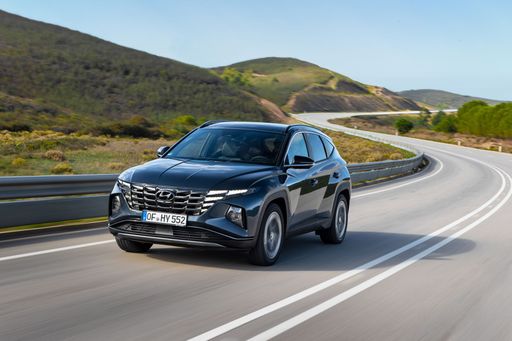
Hyundai Tucson
Hyundai Tucson
The Hyundai Tucson is a standout choice in the compact SUV segment, offering a perfect blend of style, comfort, and practicality. Its modern design is complemented by a spacious interior that provides ample room for passengers and luggage alike. With advanced technology and safety features, the Tucson ensures a smooth and enjoyable driving experience.
details @ hyundai.news
@ hyundai.news
 @ hyundai.news
@ hyundai.news
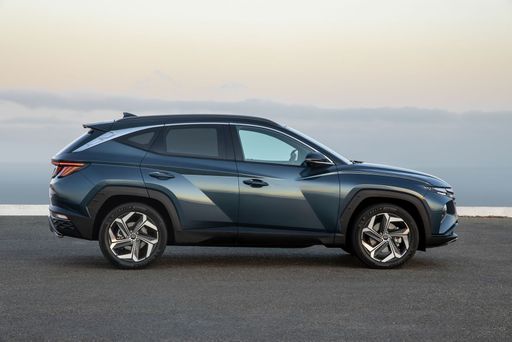 @ hyundai.news
@ hyundai.news
 @ hyundai.news
@ hyundai.news
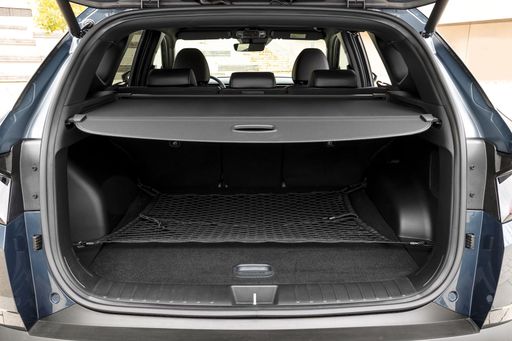 @ hyundai.news
@ hyundai.news
Kia Ceed Sportswagon
The Kia Ceed Sportswagon is a versatile estate car that combines practicality with a touch of elegance. It offers a spacious interior, making it ideal for families or those with an active lifestyle. The vehicle's sleek design and advanced features make it a strong contender in the competitive estate car market.
details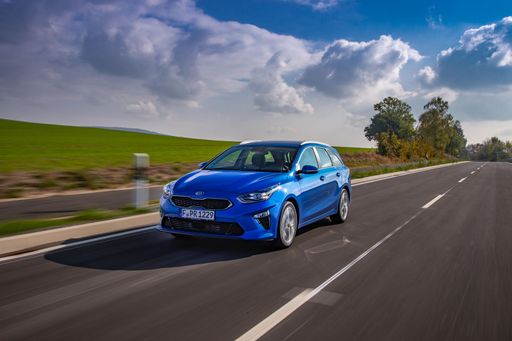 @ press.kia.com
@ press.kia.com
 @ press.kia.com
@ press.kia.com
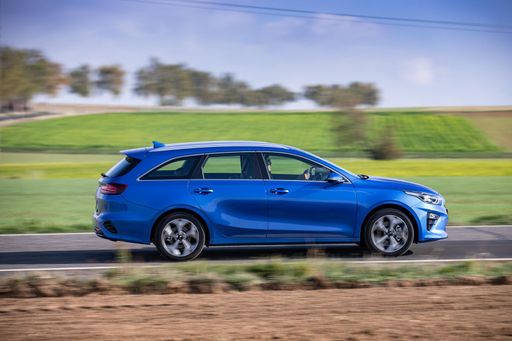 @ press.kia.com
@ press.kia.com
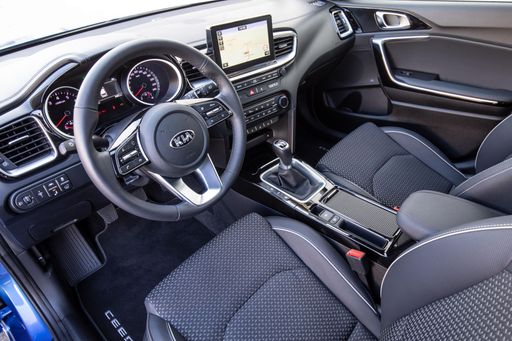 @ press.kia.com
@ press.kia.com
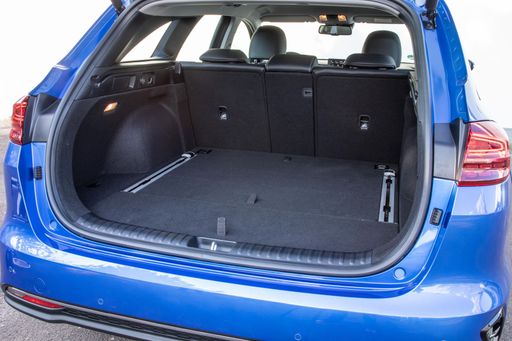 @ press.kia.com
@ press.kia.com

|

|
|
|
|
Costs and Consumption |
|
|---|---|
|
Price
30600 - 46300 £
|
Price
24300 - 29100 £
|
|
Consumption L/100km
1 - 6.9 L
|
Consumption L/100km
6 - 6.4 L
|
|
Consumption kWh/100km
-
|
Consumption kWh/100km
-
|
|
Electric Range
64 - 70 km
|
Electric Range
-
|
|
Battery Capacity
-
|
Battery Capacity
-
|
|
co2
22 - 156 g/km
|
co2
137 - 146 g/km
|
|
Fuel tank capacity
42 - 54 L
|
Fuel tank capacity
50 L
|
Dimensions and Body |
|
|---|---|
|
Body Type
SUV
|
Body Type
Estate
|
|
Seats
5
|
Seats
5
|
|
Doors
5
|
Doors
5
|
|
Curb weight
1520 - 1889 kg
|
Curb weight
1335 - 1437 kg
|
|
Trunk capacity
546 - 620 L
|
Trunk capacity
512 - 625 L
|
|
Length
4510 - 4520 mm
|
Length
4605 mm
|
|
Width
1865 mm
|
Width
1800 mm
|
|
Height
1650 mm
|
Height
1422 - 1465 mm
|
|
Max trunk capacity
1721 - 1799 L
|
Max trunk capacity
1545 - 1694 L
|
|
Payload
525 - 545 kg
|
Payload
455 - 485 kg
|
Engine and Performance |
|
|---|---|
|
Engine Type
Diesel MHEV, Petrol MHEV, Petrol, Full Hybrid, Plugin Hybrid
|
Engine Type
Petrol, Petrol MHEV
|
|
Transmission
Automatic, Manuel
|
Transmission
Automatic, Manuel
|
|
Transmission Detail
Dual-Clutch Automatic, Manual Gearbox, Automatic Gearbox
|
Transmission Detail
Dual-Clutch Automatic, Manual Gearbox
|
|
Drive Type
Front-Wheel Drive, All-Wheel Drive
|
Drive Type
Front-Wheel Drive
|
|
Power HP
136 - 252 HP
|
Power HP
100 - 140 HP
|
|
Acceleration 0-100km/h
7.9 - 11.6 s
|
Acceleration 0-100km/h
9.7 - 13.5 s
|
|
Max Speed
180 - 194 km/h
|
Max Speed
178 - 197 km/h
|
|
Torque
265 - 367 Nm
|
Torque
172 - 253 Nm
|
|
Number of Cylinders
4
|
Number of Cylinders
3 - 4
|
|
Power kW
100 - 185 kW
|
Power kW
74 - 103 kW
|
|
Engine capacity
1598 cm3
|
Engine capacity
998 - 1482 cm3
|
General |
|
|---|---|
|
Model Year
2024
|
Model Year
2024
|
|
CO2 Efficiency Class
E, F, D, B
|
CO2 Efficiency Class
E
|
|
Brand
Hyundai
|
Brand
Kia
|
What drive types are available for the Hyundai Tucson?
Available configurations include Front-Wheel Drive or All-Wheel Drive.
The prices and data displayed are estimates based on German list prices and may vary by country. This information is not legally binding.
